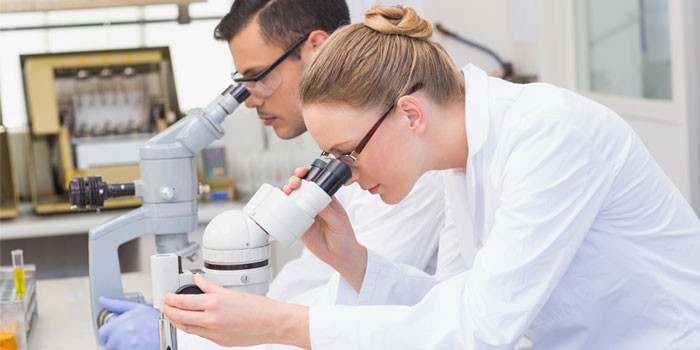Injectable Polyurethane Foam Could Prevent Fatal Blood Loss in Wounded Soldiers

BALTIMORE, MD – July 17, 2014 – Without prompt care, a badly wounded soldier can easily bleed to death while being transported to a distant medical station. Two traditional treatments—tourniquets and medicated gauze pads—often cannot stop the blood loss from a deep wound at the neck, shoulder or groin.
To give these soldiers a fighting chance at survival, Johns Hopkins undergraduates have invented an injectable foam system designed to stop profuse bleeding from a wound where a limb or the head is connected to the torso. The students' invention is designed to apply pressure and curb blood loss during the critical first hour during which a wounded soldier is moved to a site that provides more advanced medical help.
The new battlefield treatment is needed, the students say, because a tourniquet or a gauze pad with a clotting agent are difficult to apply effectively to deep wounds at these junctional body sites. In addition, the precise source of blood loss in such wounds is not always easy to find.
"The problem is that damage from bullets and bone fragments deep inside a junctional wound is not always visible from outside the body, and a regular clotting agent may not be able to reach the origin of the bleeding," said Sydney Rooney, leader of the biomedical engineering student team that sought to solve this problem. "We came up with a foam injection system that fills the wound area and blocks the blood loss."
She said the goal is to prevent wounded soldiers from losing more than half of their blood volume before they reach a medical facility. The aim is to reach such a facility within 60 minutes, the so-called golden hour during which trauma care is most successful.
"Our project has been dealing very literally with a life and death matter," Rooney said. "At the end of the day, that provided some extra motivation for our team."
Last fall, she and seven other Johns Hopkins undergrads chose to develop this battlefield blood-loss prevention system from a list of possible class projects. Their prototype emerged from the Johns Hopkins undergraduate design team program in the Department of Biomedical Engineering, which is shared by the university's School of Medicine and its Whiting School of Engineering.
To get a sense of what happens when soldiers are wounded, the students first conducted experiments with a gel that mimics the consistency of human tissue. The students used a rod to create "blood vessels" filled with water within the gel. Team members then carved "wounds" into the gel to simulate the bleeding process. To stop blood loss from such a wound, the students identified two liquid chemicals that, when mixed, rapidly form a polyurethane foam.
"The foam fills up the wound opening, hardens and applies pressure to the walls of the cavity," said Allie Sanzi, who participated in the project during her freshman year. "This should lead to more effective targeting and treatment at the source of the bleeding."
The two chemicals—a polyol and a diisocyanate—that produce the foam remain in canisters that are stored separately within the injector device before they are needed. The students designed the canisters to keep the chemicals stable in military conditions at temperatures up to 100 degrees F for at least one year. The injector is about the size of a whiteboard marker. On the battlefield, the soldier administering the treatment would mix the two chemicals with a mechanism inside the injector. Then, pushing down the plunger would insert the expanding foam into the wound to reduce bleeding.
The students' project was proposed and supervised by two surgeons at All Children's Hospital, a Johns Hopkins Medicine facility in St. Petersburg, Fla. All Children's Hospital serves as a clinical training site for medics in the Green Berets, Navy Seals, Army Rangers and Marine Special Forces who require pediatric emergency response experience. This allowed the student inventors to meet with these teams and the surgeons to discuss the project and prototypes.
One of the sponsoring surgeons, Paul D. Danielson, a military veteran who is now medical director for pediatric surgery at All Children's, said the students' device looks quite promising, even though it's still at the prototype stage. "I don't think it's pie in the sky at all," he said. "I think it's a very viable solution to a problem that's been plaguing us on the battlefield."
Another of the students' sponsors and advisers, All Children's pediatric surgeon Nicole Chandler, was impressed by the undergrads' solid grasp of design and clinical issues. "I think the students did a wonderful job on this project," she said. "Their understanding of some medical concepts was beyond that of many medical students. They came up with a simple, intuitive design that has the potential to save many lives."
The student inventors showcased their device at the annual Johns Hopkins Biomedical Engineering Design Day event, organized by the university's Center for Bioengineering Innovation and Design. At the event in May, the battlefield wound treatment received a faculty award for best design process and a second-place audience choice honor for its poster. In addition to Rooney and Sanzi, the members of the student team were Katie Hochberg, Logan Howard, Austin Jordan, Divya Kernik, Jeff Knox and Ernest Scalabrin.
The students have received university approval to begin animal testing of the prototype system, but have not yet begun such procedures. No human testing has taken place. The students plan to work with their faculty advisers and medical sponsors to determine how to move the project toward further testing and eventual adoption and use in military settings.
Robert H. Allen, an associate research professor of biomedical engineering at Johns Hopkins, directs the undergraduate design team program.
About JHU: After more than 130 years, Johns Hopkins remains a world leader in both teaching and research. Eminent professors mentor top students in the arts and music, the humanities, the social and natural sciences, engineering, international studies, education, business and the health professions. For more information on JHU and the injectable foam, please use the contact information and link provided below.
Disqus website name not provided.









































